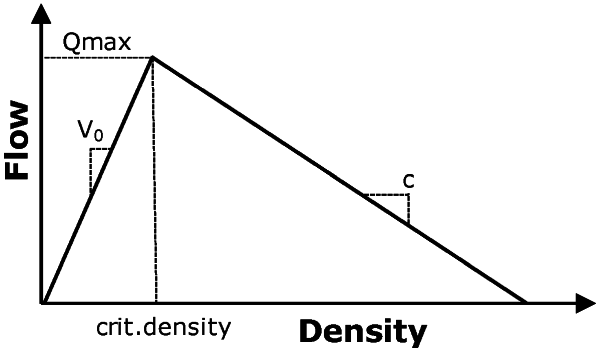| CPC G08G 1/0133 (2013.01) | 20 Claims |

|
1. A method for generating traffic data indicative of traffic volume and/or traffic density within a navigable network in an area covered by an electronic map, the electronic map comprising a plurality of segments representing navigable elements of the navigable network, the method comprising:
obtaining positional data relating to the movement of a plurality of devices along the navigable elements represented by the segments of the electronic map;
determining an estimate of one or more average penetration rates for a region, wherein each of the one or more average penetration rates is determined by:
computing, using an average speed for at least one respective congested segment, a traffic volume for the at least one respective congested segment, wherein a congested segment is a segment having traffic conditions such that vehicles travel along the segment at a substantially constant and reduced collective speed relative to an expected free flow speed for the segment; and
computing the average penetration rate as percentage of the traffic volume represented by devices from among the plurality of devices that traveled on the at least one respective congested segment;
determining, based on the obtained positional data, a sample volume for a non-congested segment within the region, wherein the sample volume is indicative of a number of the plurality of devices counted on the non-congested segment within a certain time or within a length interval of the non-congested segment; and
estimating, using the determined sample volume and a selected one of the average penetration rates for the region, a traffic volume and/or traffic density for the non-congested segment.
|